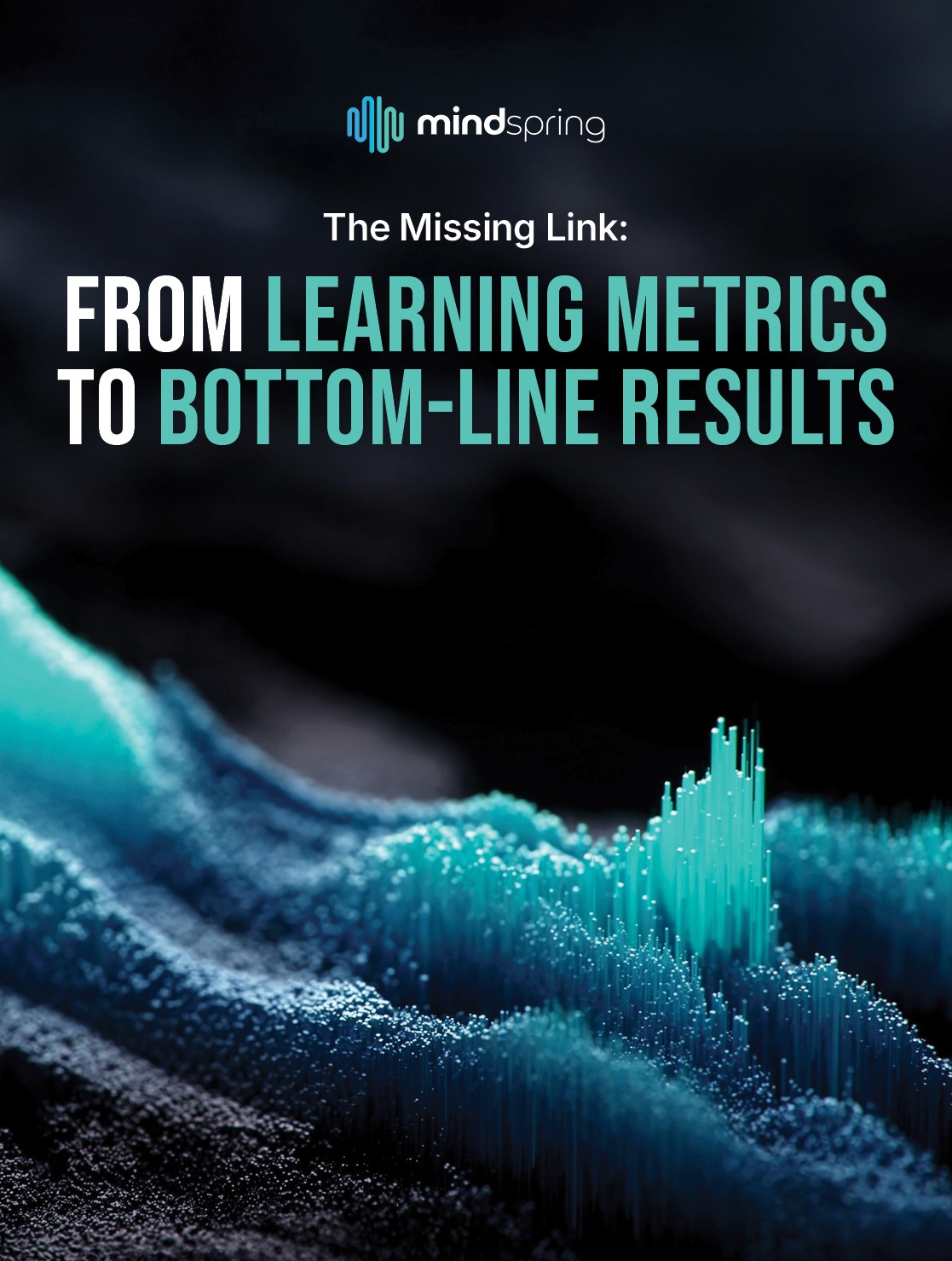The Uncomfortable Truth About L&D Measurement
Walk into any Learning and Development department today, and you'll likely hear the same refrain: "We need to show ROI." Yet despite this universal acknowledgment, most L&D teams remain trapped in a cycle of measuring activities rather than impact. They're counting completions, tallying satisfaction scores, and tracking course enrollments—all while struggling to answer the one question that matters most to business leaders: "What difference did this training actually make?"
This isn't a failure of intention. L&D professionals are passionate about creating meaningful learning experiences and driving organizational success. The problem lies in a fundamental misunderstanding of what ROI measurement actually requires and how to bridge the gap between learning activities and business outcomes.

The 90% Problem: Why Most L&D Teams Struggle
Research consistently shows that approximately 90% of L&D organizations struggle to demonstrate clear business value from their training programs. This statistic isn't just a measurement problem—it's a strategic crisis that affects budget allocations, organizational credibility, and the ability to secure resources for future learning initiatives.
The struggle manifests in several ways:
Resource Justification Challenges
When budget cuts loom, training programs are often first on the chopping block because their business value remains unclear. L&D teams find themselves defending line items with completion rates and learner feedback scores, while other departments present clear revenue impact and cost savings.
Limited Strategic Influence
Without concrete business impact data, L&D leaders struggle to secure seats at strategic planning tables. They're viewed as service providers rather than strategic partners, relegated to implementing rather than influencing organizational direction.
Data Without Direction
Many teams collect enormous amounts of data—completion percentages, time spent in courses, quiz scores, satisfaction ratings—yet still can't answer whether their programs are working. The abundance of learning metrics creates an illusion of measurement sophistication while missing the mark on business relevance.
The Great Disconnect: Learning Metrics Vs. Business Reality
At the heart of the ROI challenge lies a critical disconnect between what L&D teams typically measure and what business leaders need to see.
Traditional learning metrics focus on the learning process itself:
- Course completion rates
- Learner satisfaction scores
- Knowledge retention assessments
- Time to completion
- Participation levels
Business impact metrics focus on organizational outcomes:
- Revenue growth
- Cost reduction
- Quality improvements
- Safety incidents
- Employee retention
- Customer satisfaction
- Productivity gains
The disconnect occurs when L&D teams assume that positive learning metrics automatically translate to business value. A 95% completion rate for a sales training program delivers no organizational impact if sales performance doesn't improve. High satisfaction scores for leadership development are irrelevant if employee engagement remains flat.
This isn't to say learning metrics are worthless—they're essential for understanding and improving the learning experience. However, they represent only the first half of the measurement equation. The missing piece is the systematic connection between learning achievements and business outcomes.
Introducing The Two-Tier Measurement Revolution
Effective ROI measurement requires a two-tier approach that honors both learning excellence and business impact:
Tier 1: Learning metrics answer the question "Did people learn?"
- These metrics ensure your training programs are well-designed and effectively delivered
- They provide feedback for continuous improvement of learning experiences
- They validate that knowledge transfer is occurring as intended
Tier 2: Business metrics answer the question "Did learning create value?"
- These metrics connect learning outcomes to organizational performance
- They provide the data needed for budget justification and strategic planning
- They demonstrate the tangible return on learning investments
Both tiers are necessary, but neither is sufficient alone. Organizations need robust learning metrics to ensure their programs are working as designed, and they need clear business metrics to prove those programs are worth the investment.
Setting Realistic Expectations For True ROI Measurement
Before diving deeper into ROI measurement strategies, it's crucial to establish realistic expectations about what this journey requires.
Time Investment
Meaningful ROI measurement isn't a quick fix. It requires upfront planning, systematic data collection, and patience as business impacts unfold over time. Some training programs show immediate results, while others may take months or even years to demonstrate full impact.
Cross-Functional Collaboration
Effective measurement requires partnerships beyond the L&D team. You'll need to work with HR for performance data, finance for cost information, operations for productivity metrics, and IT for data integration capabilities.
Methodological Rigor
True ROI measurement demands more sophisticated approaches than simple before-and-after comparisons. You'll need to consider external factors, establish control groups where possible, and use statistical methods to isolate the impact of your training programs.
Stakeholder Education
Business leaders may need education about the complexity of measuring learning impact. Quick wins and easy answers are rare in ROI measurement, but the insights gained are invaluable for strategic decision-making.
The Path Forward
The gap between learning metrics and business results isn't insurmountable—it's bridgeable with the right approach, tools, and commitment. Organizations that successfully make this connection don't just survive budget cuts; they thrive as strategic partners in organizational success.
In our eBook, The Missing Link: From Learning Metrics To Bottom-Line Results, we'll explore proven frameworks for connecting learning to business outcomes, examine real-world case studies of successful ROI measurement, and provide practical tools for building your own measurement system. The goal isn't to eliminate learning metrics but to complement them with business impact data that tells a complete story of value creation.
The ROI reality check isn't meant to discourage—it's meant to redirect. By acknowledging the current measurement gap and committing to bridging it, L&D teams can transform from cost centers into profit centers, from service providers into strategic partners, and from activity trackers into impact demonstrators.









